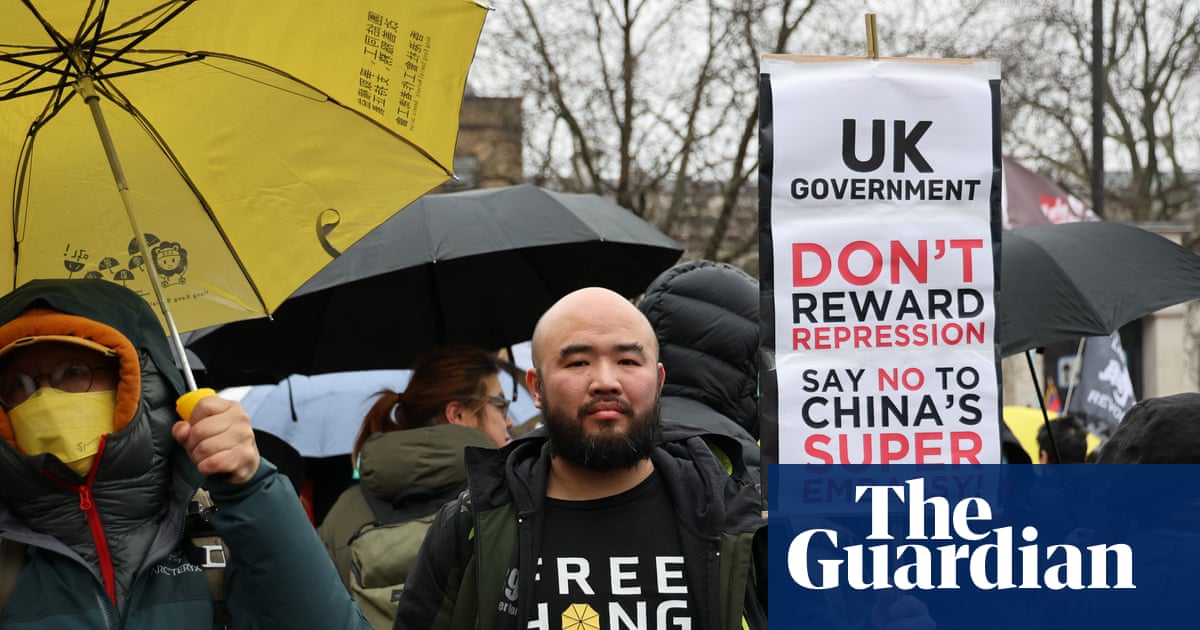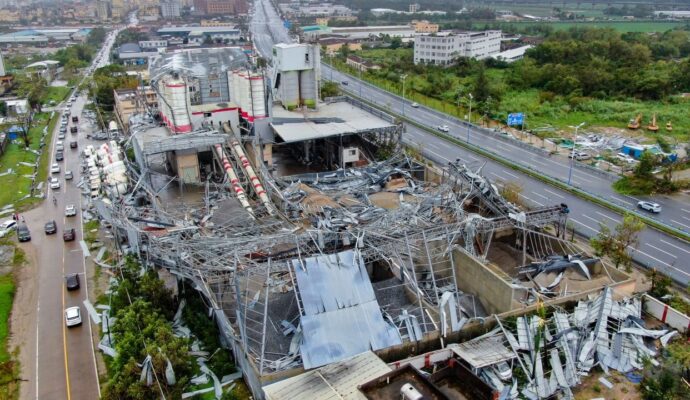
Ministers have asked China to send them the unredacted designs for its proposed “super-embassy” in London or justify why some of the drawings have been blacked out.
In a letter on Wednesday Angela Rayner, the housing secretary and deputy prime minister, gave the Chinese embassy two weeks to send additional details about its plans before a crunch decision over whether to approve them.
The government must deliver a verdict on the proposed super-embassy, which would occupy a sprawling 20,000 sq metres at Royal Mint Court in east London, by 9 September. If approved it would be the biggest embassy in Europe.
The controversial plan has met fierce opposition from local residents and campaigners concerned about Beijing’s human rights record in Hong Kong and Xinjiang. Several large protests have taken place outside the site in recent months.
In her letter, Rayner noted that two of the proposed embassy buildings on the drawings – the Cultural Exchange Building and Embassy House – had been “greyed out”.
She wrote to the planning consultancy in charge of the Chinese embassy proposal asking it to “identify precisely and comprehensively” the drawings that had been redacted and explain the rationale and justification for these redactions.
She asked the embassy to “consider whether to provide unredacted versions” of the drawings and questioned whether the redactions might infringe on the principle that the public must know what planning permission is granted for.
The letter also noted that the Home Office and Foreign Office had requested the construction of a “hard perimeter” around the embassy site to address public safety concerns and that this could represent “a material amendment to the application that would require further consultation”.
A lawyer for the Chinese embassy told the planning inquiry into the proposal earlier this year that China had no intention of altering the design. In her letter, Rayner asked for further details on how the embassy intended to address the government’s safety concerns.
Luke de Pulford, executive director of the Inter-Parliamentary Alliance on China, which is a long-standing critic of the plans, said: “We have gone from the mega-embassy feeling like a done deal to Beijing having a mountain to climb to secure it.
“The only way this development now gets approved is if the foreign and home secretaries roll over on their very modest conditions. They must stand firm, and we must finally put this disastrous plan to bed.”
after newsletter promotion
China bought the old Royal Mint Court for £255m in 2018, but its plans to build an embassy there stalled after Tower Hamlets council refused planning permission in 2022, citing security concerns and opposition from residents.
The Conservative government declined to intervene but Labour took the matter out of the council’s hands by calling it in soon after taking power last summer. The future of the embassy has become a major issue in diplomatic relations between the UK and China, with the country’s president, Xi Jinping, raising it with Keir Starmer in their first phone call last August.
The Guardian reported last year that China was blocking requests to rebuild the British embassy in Beijing while the fate of its own embassy in London was being decided.
The Ministry of Housing, Communities and Local Government declined to comment on a live planning issue.


